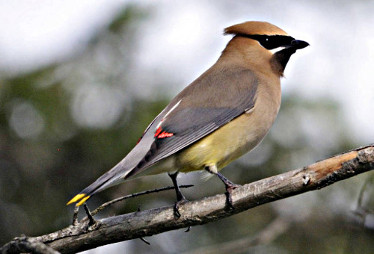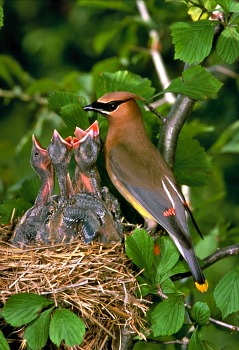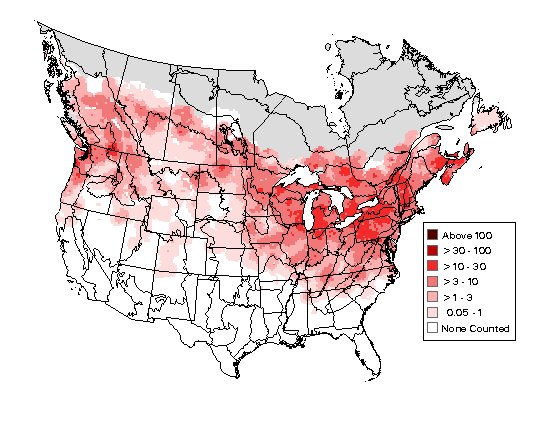Cedar Waxwing

Cedar Waxwing Information
Length: 6.5 - 8"
Habitat: Open woodlands, forest edges, streamsides, orchards, old fields, farmlands, residential areas. Berry bushes or fruit trees are a habitat requirement.
Diet: Many different wild fruits and berries, including cherries, juniper fruit, dogwood fruit, blackberries, viburnum fruit. Insects such as cankerworms, caterpillars, beetles, and ants. Tree sap and some flower petals.
Additional Information
Cedar WaxwingHabitat, diet, feeding behavior, nesting, migration, and conservation status of this bird. Includes range map, photos, and songs and calls. (From Audubon Field Guide)
Cedar Waxwing at Nest

© NNE and its licensors
Cedar Waxwing
Identification Tips
- Short, thin bill
- Pale brown crest
- Black eye patch and chin
- Pale brown head fading into pale yellow belly
- White undertail coverts
- Dark brown back
- Dark wings with thin, red bar
- Black tail with yellow tip
- Juveniles have much duller, grayer head and body with blurry streaks on underparts
- Frequently found in large flocks feeding on fruit
Similar Species
The Bohemian Waxwing is similar to the Cedar Waxwing but has dark undertail coverts, gray belly and white and yellow markings in the wing.
(Credit: U. S. Geological Survey)
Breeding Bird Survey Map,
2011-2015

(Image credit: USGS)
Range in New England
The Cedar Waxwing is a year-round resident in most of New England.
Cedar Waxwing
Range Maps from Cornell
Cedar Waxwing breeding, year-round, and nonbreeding range.![]()
Includes separate map of sightings.
Cedar Waxwing
Christmas Bird Count Map
Historical CBC Map from USGS